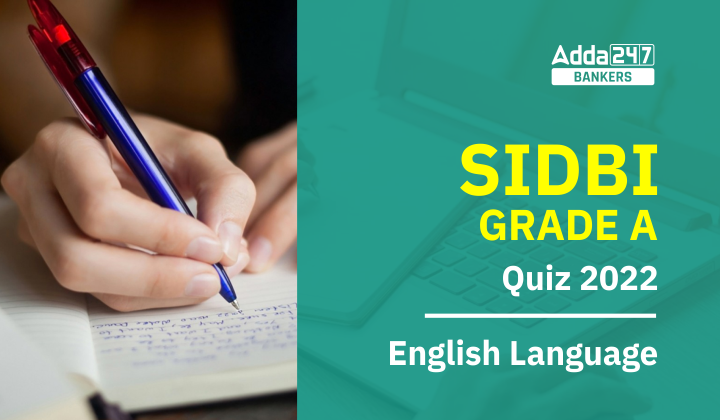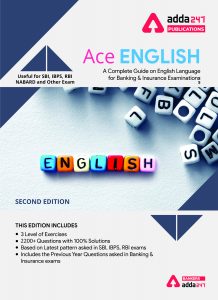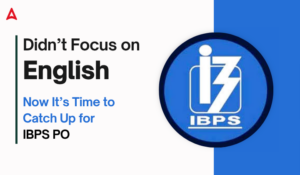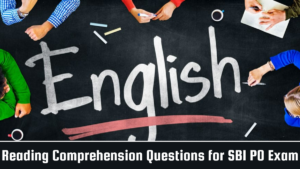Directions (1-8): Read the following passage and answer the given questions. Some words are highlighted to help you answer the questions.
UNESCO’s Intergovernmental Committee for the Safeguarding of the Intangible Cultural Heritage on Wednesday put “Durga Puja in Kolkata” on the Representative List of the Intangible Cultural Heritage of Humanity. The Committee is meeting virtually in its 16th Session from December 13 to 18. Although celebrated across the country — notably in Tripura, Bihar, Jharkhand, Odisha, Assam, Maharashtra, Delhi, and Uttar Pradesh — and in neighbouring Bangladesh, the heart of the 10-day annual Sharodotsav festival is in Kolkata, where more than 3,000 community Durga Pujas are held, apart from a large number of pujas in Bengali households.
According to UNESCO, “cultural heritage does not end at monuments and collections of objects”, but “also includes traditions or living expressions inherited from our ancestors and passed on to our descendants, such as oral traditions, performing arts, social practices, rituals, festive events, knowledge and practices concerning nature and the universe or the knowledge and skills to produce traditional crafts”. Intangible cultural heritage, according to UNESCO, is “traditional, contemporary and living at the same time”, “inclusive”, “representative”, and “community-based”. It is “an important factor in maintaining cultural diversity in the face of growing globalisation” — and “an understanding of the intangible cultural heritage of different communities helps with intercultural dialogue, and encourages mutual respect for other ways of life”.
The Representative List of the Intangible Cultural Heritage of Humanity currently has 492 elements, UNESCO said in a release. The list of Intangible Cultural Heritage elements on the UNESCO website includes 13 entries from India. Besides Durga Puja in Kolkata (2021), the India list has: Kumbh Mela (2017); Nowruz (2016); traditional brass and copper utensil-making among the Thatheras of Jandiala Guru, Punjab (2014); Sankirtana of Manipur (2013); Buddhist chanting of Ladakh (2012); Chhau dance, Kalbelia dance of Rajasthan, and Mudiyettu of Kerala (2010); Ramman festival of Garhwal (2009); and Kutiyattam Sanskrit theatre, Ramlila, and Vedic chanting (2008). The 2021 Representative List of the Intangible Cultural Heritage of Humanity also has entries including Arabic calligraphy, Uzbekistan’s Bakhshi art, Congolese rumba, falconry, Inuit drum dancing of Denmark, and the traditional Italian knowledge and practice of truffle hunting and extraction.
A statement issued by West Bengal government said, “The 16th Committee of UNESCO for safeguarding of the Intangible Cultural Heritage (ICH) in its meeting held on 15th December 2021 in Paris has inscribed DURGA PUJA in KOLKATA on the representative list of Intangible Cultural Heritage (ICH) of Humanity. This is the 1st festival in Asia to achieve __________(I)_________ as UNESCO ICH of Humanity.” It added, “UNESCO also commended the concerned organisations in Kolkata for their initiatives to involve marginalised groups and individuals as well as women in their participation of safeguarding the intangible cultural heritage.”
Q1. Why does UNESCO emphasize on the value of ‘Intangible cultural heritage’?
(a) It helps budding businesses to promote their local art and services towards newer demographics.
(b) It is said to be a critical component in preserving cultural diversity in the in the wake of globalisation.
(c) To figure out the countries who have contributed the most to the making of ‘The Representative List of the Intangible Cultural Heritage of Humanity’.
(d) Both (a) and (c)
(e) Both (b) and (a)
Q2. Kolkata organisations received praised from UNESCO for _____________________________________________.
(a) for their punctual and highly impressive and coordinated events.
(b) displaying the culture and heritage of the state in a very sophisticated and fascinating way.
(c) their efforts to enlist the participation of marginalised groups and individuals, women, and for the preservation of intangible cultural assets.
(d) All of the above
(e) None of the above
Q3. Which of the following is NOT part of ‘The 2021 Representative List of the Intangible Cultural Heritage of Humanity’?
(a) Inuit drum dancing of Denmark
(b) Durga Puja in Kolkata
(c) Bakhshi art from Uzbekistan
(d) Arabic calligraphy
(e) Kalbelia dance of Rajasthan
Q4. Select the full form of ICH from the following options as given in the passage.
(a) Intergovernmental Committee of Hallmark
(b) Intra Circle Hubs
(c) Intangible Cultural Heritage
(d) International Council on Harmonisation
(e) None of the above
Q5. Choose the synonym of EXTRACTION as highlighted in the passage.
(a) Admonish
(b) Unsheathe
(c) Allure
(d) Mollify
(e) Succinct
Q6. Which of the following word is near opposite of the word INTANGIBLE as highlighted in the passage?
(a) Orphan
(b) Conceit
(c) Virtuous
(d) Embody
(e) Dispersion
Q7. Which of the following word will be placed in the blank (I)?
(a) recognition
(b) cowardice
(c) absurdity
(d) clairvoyance
(e) feasibility
Q8. The second paragraph of the passage mentions a word which means the spread of products, technology, information, and jobs across national borders and cultures. Choose which word is it from the following options.
(a) contemporary
(b) ancestors
(c) traditions
(d) globalisation
(e) None of these
Directions (9-15): Read the following passage and answer the given questions. Some words are highlighted to help you answer the questions.
Coursera’s Women Skills Report indicates a narrowing gender gap in online learning in India. India ranks second worldwide for the highest number of women learners on Coursera. Indian women are learning STEM courses at one of the fastest paces in the world. As per the Women and Skills Report 2021 by major online learning website Coursera, the share of overall course enrolments from women in India increased from 26% in 2019 to 36% in 2021, most likely spurred by the Covid-19 pandemic and the drive towards upskilling courses online which was aided by a number of online learning websites.
Women are enrolling in STEM courses to acquire technical skills to advance their careers and bag leadership and management positions. The gender gap in STEM courses also narrowed from 23% enrolments from women in 2019 to 32% in 2021. These numbers bring hope because as per World Bank data, at just 21% India has one of the lowest female workforce participation rates in the world. This means that 79% of Indian women (aged 15 years and above) do not even _______(A)______ work. For the future to be female, the gender gap must be addressed.
“Progress isn’t a solitary journey. Growing the participation of women workers is critical to unlock sustained economic benefits, including an increase in annual GDP,” says Betty Vandenbosch, Chief Content Officer, Coursera. “Organizations must leverage the opportunities created by remote work and online learning to make meaningful changes, and empower more women to benefit from the promise of a digital future,” she says. The Women and Skills Report includes data from 40 million new learners who registered during the pandemic between January 1, 2020 and June 30, 2021. The report captures extensive global insights on online learning, skilling, and other relevant themes.
India has 4.8 million registered women learners on Coursera, the second highest of all 190 countries globally. Women are making most of the skill-building opportunities that could help them advance in their STEM careers. The following data from Coursera shows how Indian women are gearing up to make their presence felt in the workforce in the near future:
35% of business learners are women in India (compared to 36% globally)
41% of government learners are women in India (compared to 51% globally)
42% of campus learners are women in India (compared to 42% globally)
Overall, 38% of total learners in India today are women, up from 24% in 2016. The median age of Indian women learners on Coursera is 27, four years younger than the global median age of 31.
Q9. According to the Chief Content Officer of Coursera, what is the key to reaping long-term monetary advantages?
(a) Providing monetary subsidies to women working in different fields.
(b) Increasing women’s participation in the workforce.
(c) Safeguarding women’s travel journeys as they commute back and forth from their workplaces.
(d) All of the above
(e) None of these
Q10. The following options contain an incorrect statement with accordance to the information given in the passage. Choose which statement it is.
(I) In India, 38% of total students are women.
(II) It was observed that the gender gap in Art courses has also diminished to 23% from 32% of previous year.
(III) India has the second-highest number of women learners in any of the 190 nations.
(a) Both (I) and (III)
(b) Only (III)
(c) Only (II)
(d) All are incorrect
(e) Both (II) and (I)
Q11. What reason does the author give for women investing in STEM courses?
(a) To gain technical skills that will help them grow in their careers and land management and leadership positions.
(b) To adapt to the new modes of learning, i.e., studying courses via online means.
(c) To become political leaders and be in positions of power to make fundamental changes in the societal norms.
(d) Both (a) and (c)
(e) All of them
Q12. Choose the synonym of SOLITARY as highlighted in the passage.
(a) aggravate
(b) artifice
(c) unaccompanied
(d) opaque
(e) intrinsic
Q13. First paragraph of the passage contains a word which means a disease which is prevalent over a whole country or the world. Which of the following word is it?
(a) enrolment
(b) upskilling
(c) paces
(d) pandemic
(e) None of the above
Q14. Which of the following word is near opposite of the word ACQUIRE as highlighted in the passage?
(a) forfeit
(b) manageable
(c) shrewd
(d) tarnish
(e) None of these
Q15. Which of the following word will be placed in the blank (A)?
(a) exempt
(b) reap
(c) exhibit
(d) seek
(e) All of them
Solutions
S1. Ans (b)
Sol. The correct answer is option (b): It is said to be a critical component in preserving cultural diversity in the in the wake of globalisation.
The answer is present in the second paragraph: Intangible cultural heritage, according to UNESCO, is “traditional, contemporary and living at the same time”, “inclusive”, “representative”, and “community-based”. It is “an important factor in maintaining cultural diversity in the face of growing globalisation” —
S2. Ans (c)
Sol. The correct answer is option (c): their efforts to enlist the participation of marginalised groups and individuals, as well as women, in the preservation of intangible cultural assets.
To locate the answer, let’s look at the last paragraph where it is mentioned: It added, “UNESCO also commended the concerned organisations in Kolkata for their initiatives to involve marginalised groups and individuals as well as women in their participation of safeguarding the intangible cultural heritage.”
S3. Ans (e)
Sol. The correct answer is option (e): Kalbelia dance of Rajasthan.
We choose option (e) because the third paragraph states that ‘Kalbelia dance of Rajasthan, and Mudiyettu of Kerala’ were a part of the list back in 2010.
S4. Ans (c)
Sol. The correct answer is option (c): Intangible Cultural Heritage.
This is given in the first line of the last paragraph “A statement issued by West Bengal government said, “The 16th Committee of UNESCO for safeguarding of the Intangible Cultural Heritage (ICH)…….”
S5. Ans (b)
Sol. The correct answer is option (b): Unsheathe. It means draw or pull out (a knife, sword, or similar weapon) from its sheath or covering.
Admonish- warn or reprimand someone firmly.
Allure- the quality of being powerfully and mysteriously attractive or fascinating.
Mollify- appease the anger or anxiety of (someone).
Succinct- (especially of something written or spoken) briefly and clearly expressed.
S6. Ans (d)
Sol. The correct answer is option (d): Embody.
Since intangible means unable to be touched or grasped; not having physical presence, the word which is the closest to its opposite meaning is embody. It means be an expression of or give a tangible or visible form to (an idea, quality, or feeling).
Orphan- a child deprived by death of one or usually both parents.
Conceit- excessive pride in oneself.
Virtuous- having or showing high moral standards.
Dispersion- the action or process of distributing things or people over a wide area.
S7. Ans (a)
Sol. The correct answer is option (a): recognition.
To gain recognition: the act of praising or rewarding someone for something they have done.
S8. Ans (d)
Sol. The correct answer is option (d): globalisation.
Only option (d) fits the description given in the question.
S9. Ans (b)
Sol. The correct answer is option (b): Increasing women’s participation in the workforce.
This answer can be found in the third paragraph where it says: “Growing the participation of women workers is critical to unlock sustained economic benefits, including an increase in annual GDP,” says Betty Vandenbosch, Chief Content Officer, Coursera.
S10. Ans (c)
Sol. The correct answer is option (c): Only (II).
Statement (II) is incorrect because it says in the second paragraph: The gender gap in STEM courses also narrowed from 23% enrolments from women in 2019 to 32% in 2021.
Statement (I) is correct because the last paragraph says: Overall, 38% of total learners in India today are women, up from 24% in 2016.
Statement (III) is correct as well and we can see that in the first sentence of the last paragraph itself: India has 4.8 million registered women learners on Coursera, the second highest of all 190 countries globally.
S11. Ans (a)
Sol. The correct answer is option (a): To gain technical skills that will help them grow in their careers and land management and leadership positions.
This answer is present in the first line of the second paragraph: Women are enrolling in STEM courses to acquire technical skills to advance their careers and bag leadership and management positions.
S12. Ans (c)
Sol. The correct answer is option (c): unaccompanied. It means having no companion or escort.
Aggravate- make (a problem, injury, or offence) worse or more serious.
Artifice- clever or cunning devices or expedients, especially as used to trick or deceive others.
Opaque- not able to be seen through; not transparent.
Intrinsic- belonging naturally; essential.
S13. Ans (d)
Sol. The correct answer is option (d): pandemic.
None of the other words fit the definition given in the question.
S14. Ans (a)
Sol. The correct answer is option (a): forfeit.
Since acquire means to buy or obtain (an asset or object) for oneself, forfeit is it’s opposite and means to lose or give up (something) as a necessary consequence of something else.
Manageable- able to be controlled or dealt with without difficulty.
Shrewd- having or showing sharp powers of judgement; astute.
Tarnish- lose or cause to lose lustre, especially as a result of exposure to air or moisture.
S15. Ans (d)
Sol. The correct answer is option (d): seek.
If you seek something such as a job or a place to live, you try to find one.





 Didn’t Focus on English? Now It’s Time t...
Didn’t Focus on English? Now It’s Time t...
 Reading Comprehension Questions for SBI ...
Reading Comprehension Questions for SBI ...
 Fillers Questions for SBI PO Mains Exam ...
Fillers Questions for SBI PO Mains Exam ...


